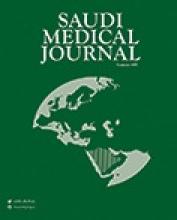Clinical Presentation
A 4-month old boy not known to have any medical illness, presented to the emergency with a history of skin rash for a day. The rash first appeared as a single red small spot on the chin, rapidly progressed to involve arms and legs within a 24 hour period, then enlarged and formed of vesicles with clear yellowish fluid, after that ruptured to leave thin brown crusts. Not involve scalp, neck, trunk, mucosal surface or genitalia. He had a recent upper respiratory tract infection and diarrhea for one week. No history of fever, poor feeding or decrease of activity. No history of contact with individuals who have similar complaints. No history of insect bites, trauma, skin disease or recent travel. Unremarkable past history. He was a product of full term at 38 weeks normal spontaneous vaginal delivery with a birth weight of 3 Kg. No neonatal complication. No maternal disease during pregnancy. Developmental history was appropriate for age. Baby was immunized up to 2 months. Unremarkable family and social history. He was not on any medication. The weight is 6 kg (on 50th percentile), height is 58 cm (on 25th percentile), and the head circumference is 40 cm (on 50th percentile). His vital signs were: temperature: 36.5, pulse rate 127/min, respiratory rate 26/min. He looks well, alert, active, not in respiratory distress, no pallor or jaundice, and no dysmorphic features. His skin examination revealed several erythematosus round well defined macules, distributed on the face, arms and legs (target lesions). Bullae on the face contains clear yellowish fluid and brown crust. The lesions were not warm, tender, blanching or pururitic. There is a moderate, non pitting symmetrical edema involves the dorsum of the feet. Other systemic examination were unremarkable. Investigations showed hemoglobin 11.3 g dl, white blood cel 15.9 x103/µL, neutrophil 29%, and lymphocyte 61%. Serum urea and electrolytes were normal. Liver function tests were normal, renal profile and electrolyte were normal, urine and stool analysis were normal.
Several erythematous round well defined macules and bullae on the face.
Several erythematous round well defined macules involving both arms.
Several erythematous round well defined macules involving lower limbs.
Bullae on the face contains clear yellowish fluid with brown crust.
Several erythematous round well defined macules involving lower limbs and moderate, non pitting symmetrical edema involves the dorsum of feet.
Questions
What are possible different diagnoses?
What is the most likely diagnosis?
What is the management of this case?
Answers
The possible different diagnoses are:
Acute hemorrhagic edema of infancy
Henoch-Schonlein purpura (HSP)
Bullous impetigo
Drug Eruptions
Meningococcemia
Septicemia
The most likely diagnosis is acute hemorrhagic edema of infancy
Management of acute hemorrhagic edema of infancy is usually supportive
Discussion
Acute hemorrhagic edema of infancy (AHEI) is a rare entity of cutaneous small vessel vasculitis affecting infants between 4-24 months. It is immune complex-mediated vasculitis, which might be initiated from previous viral or bacterial infections (mostly upper respiratory tract infection, antibiotic and less likely after vaccination.1 It was initially considered as a variant of Henoch-Schönlein purpura (HSP); however, it is now considered a separate entity because of the lack of both visceral involvement and immunoglobulin A (IgA) skin depositions. The peak incidence in winters due to high rates of respiratory infections among infants.2 Acute hemorrhagic edema of infancy affects males are more than females.3 The differential diagnosis of AHEI includes HSP, erythema multiforme, meningococcemia and drug eruption.4 The classical presentation of AHEI including asymmetrical painless non-pitting edema of the face and sudden painful ecchymosis patches and plaques which appear on the face and extremities or large target shaped lesions.4 Acute hemorrhagic edema of infancy is usually diagnosed clinically after excluding other causes of purpura. Most AHEI infants are nontoxic in appearance. Histopathological findings in AHEI are very similar to HSP. However, IgA deposition is seen in only 10-35% cases of AHEI with less visceral complication. There is no effective treatment for AHEI and only symptomatic care is advised.5
Footnotes
Notice: Authors are encouraged to submit quizzes for possible publication in the Journal. These may be in any specialty, and should approximately follow the format used here. Please address any submissions to: Editor, Saudi Medical Journal, Prince Sultan Military Medical City, PO Box 7897, Riyadh 11159, Kingdom of Saudi Arabia. Tel. +966 (11) 4777714 Ext. 42840.
- Copyright: © Saudi Medical Journal
This is an open-access article distributed under the terms of the Creative Commons Attribution-Noncommercial-Share Alike 3.0 Unported, which permits unrestricted use, distribution, and reproduction in any medium, provided the original work is properly cited.











